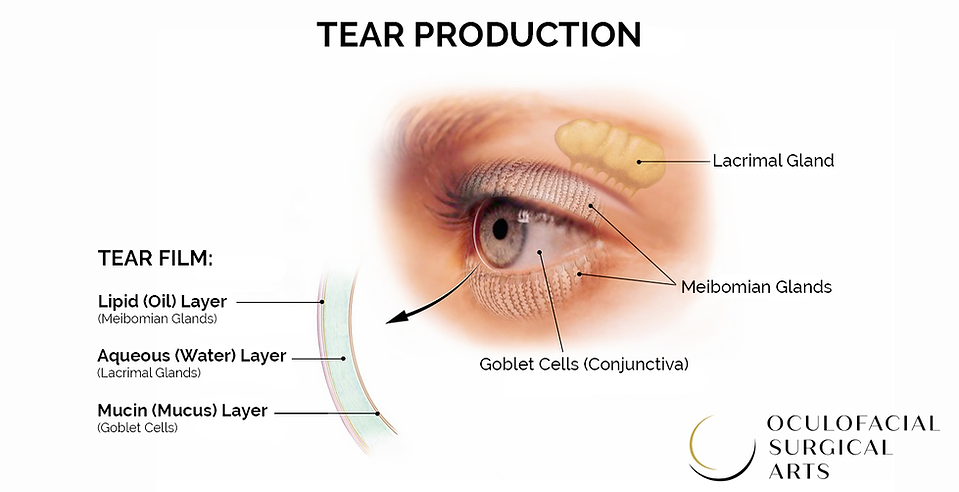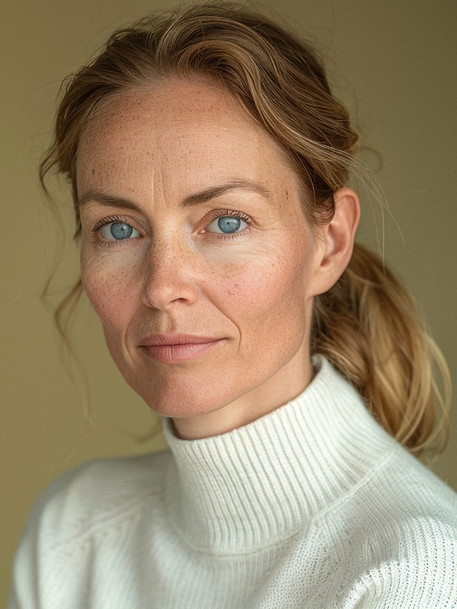
HOME › PROCEDURES › NON-SURGICAL FACIAL REJUVENATION › IPL THERAPY FOR DRY EYES
Intense Pulsed Light (IPL) Therapy for Dry Eyes
IN SAN DIEGO
Intense Pulsed Light (IPL) therapy is a groundbreaking approach to treating dry eye disease, Meibomian Gland Dysfunction (MGD), blepharitis, and ocular rosacea. The treatment helps to improve the health of the Meibomian glands, which produce the oil that prevents evaporation of the tear film.

What Causes Dry Eyes?
One of the most common causes of dry eyes is a poor quality of tears. A normal tear film consists of three layers: oil, water, and mucus. The oil layer is produced primarily by special glands on the eyelids called Meibomian glands, the water layer is produced mostly by the lacrimal gland, and the mucus layer by goblet cells on the surface of the eye (conjunctiva). The oil layer of a healthy tear film prevents evaporation of the water layer, while the mucus layer helps spread the tears evenly over the surface of the eye. Any deficiency in the oil layer can cause the tears to evaporate too quickly, causing the surface of the eye to dry and leading to dry eye symptoms.
Failure of the oil-producing glands to supply an adequate oil layer is referred to as Meibomian Gland Dysfunction (MGD). MGD can be triggered by conditions that cause inflammation of the eyelids (such as blepharitis and ocular rosacea), aging, infections (e.g., bacterial, Demodex folliculorum mite), among others. With MGD, the oils harden and clog the glands, preventing the release of oils onto the surface of the eye. Severe clogging of an oil-producing gland can also lead to development of a stye (chalazion).

What is Intense Pulsed Light (IPL)?
Intense Pulsed Light (IPL) is a light therapy that has long been used in treatment of various skin conditions, such as rosacea, sun damage, and acne. Studies have shown that it also helps treat moderate-to-severe chronic dry eye disease and MGD. It works by heating the Meibomian glands and liquifying the oils, reducing the inflammation and redness associated with rosacea and blepharitis, and eliminating harmful bacteria and mites that often live on the eyelids and eyelashes.

What are IPL Treatments Like?
First, a topical anesthetic cream is applied over the area around the eyes. Eye shields are then placed to protect the eyes. A thin layer of cooling gel is applied to the treatment area, and a handpiece attached to the light system is used to deliver the pulses of light. As the pulses of light are administered, patients will experience a slight tingling or snapping sensation. The area treated may appear flushed and red for a short period of time after the treatment. After the IPL light treatment is complete, the oil from the glands can be manually expressed to restore normal oil flow in the tear film.
© Rendia, Inc.

How Many Treatments are Needed?
Although many patients notice improvement in dry eye symptoms after their first or second treatment, an initial series of three IPL treatments, performed once a month over the course of three months, is recommended. This initial treatment series is designed to help with long-term success in treating both chronic dry eye disease and MGD. After the initial series of IPL treatments, maintenance treatments may be provided 1 to 2 times per year, depending on the severity of the condition.

What is the Recovery after Treatment?
There is no recovery time after IPL treatment. Patients may return to normal activities immediately after treatment. The use of sunblock is recommended on the treated areas, as well as sunglasses.
What are the Risks of IPL Treatments?
IPL has been used safely for many years, but there are always risks associated with any procedure. These include, but are not limited to skin discoloration, infection, pain, scarring, burns, corneal abrasion, eye irritation, allergic reaction to the topical agents used, and inability to treat the condition. Whenever a procedure is done near the eye, loss of vision must be considered possible. However, in cases where eye shields have been used, no eye injuries or loss of vision have been reported.


Who is a Candidate for IPL Treatment?
Many common therapies for dry eye disease, MGD, and blepharitis – such as artificial tears, hot compresses, and eyelid scrubs – focus on temporarily relieving symptoms instead of on treating the root cause of the condition. IPL treatment is designed to address MGD and blepharitis by stimulating healthy gland function and reducing eyelid inflammation. This focused treatment not only offers symptom relief, but also slows the progression of chronic dry eye disease.
Candidates for IPL treatment are patients with dry eye disease, MGD, blepharitis, or ocular rosacea, who have tried various forms of treatment and medications with little success or relief.
Disclaimer: This information is not intended to replace a medical consultation, nor does it constitute a doctor-patient relationship. Each individual’s treatment and/or results will vary, and no guarantee is stated or implied by any photo or statement used on this website.
Consultation for IPL to Treat Dry Eyes & Meibomian Gland Dysfunction
If you are considering IPL treatment for dry eye or Meibomian Gland Dysfunction (MGD) in San Diego, schedule a consultation with Dr. Jean-Paul Abboud at our Del Mar office. As an oculofacial plastic surgeon, Dr. Abboud offers personalized treatment plans using advanced IPL therapy.



